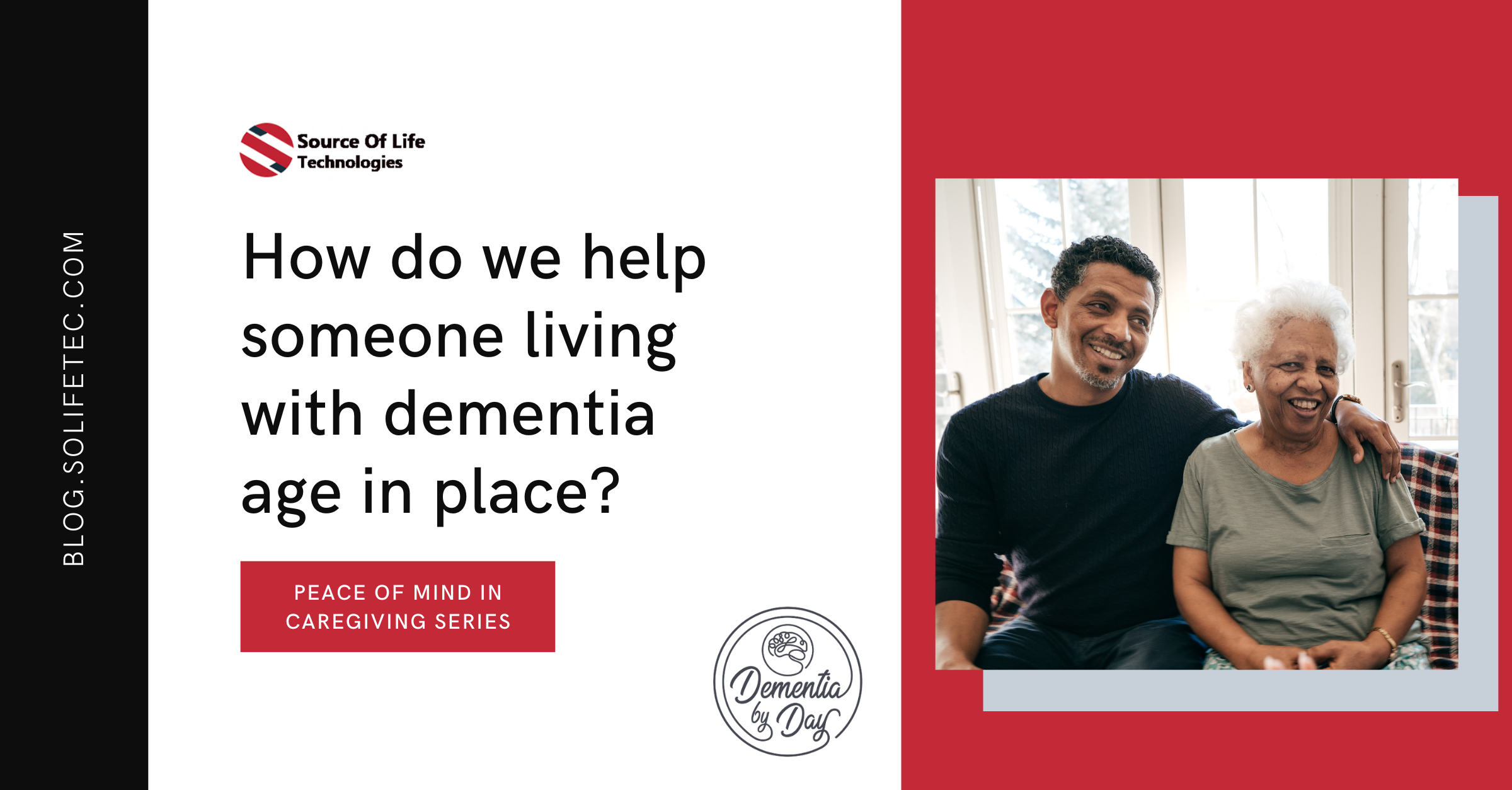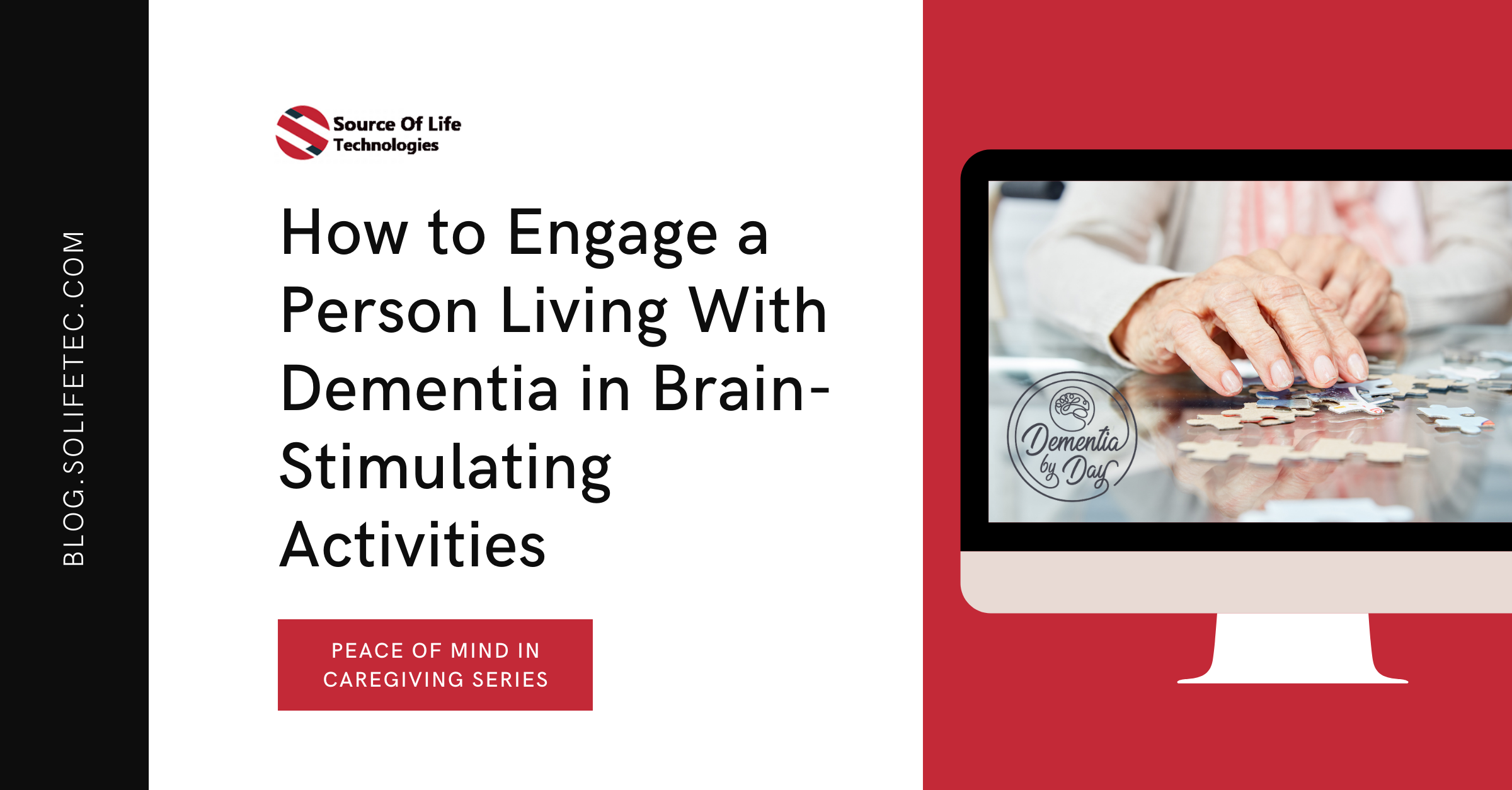How do we help someone living with dementia age in place?

How do we know when a person living with dementia cannot be home alone anymore? How do we know when it is time to transition a person living with dementia to a senior living community?
Before the onset of their disease, many people living with dementia lived at home, either alone or with a partner. Most of these individuals did not stop to create a “what-if” plan for themselves if they were diagnosed with dementia. They most likely assumed they’d finish out their life living in their own home. After receiving a diagnosis of dementia, however, everyday tasks become more challenging. Your loved one may not be bathing as often as necessary, or perhaps they aren’t keeping the fridge free of old food. Commonly, a family member—usually a spouse or adult child—takes on the responsibility for most of the chores around the home. Maybe the person living with dementia moves in with a relative, or maybe a relative moves in with them.
I had a man ask me recently, “How do I know when I need to move my mom into a dementia care community?” He described a situation where she was at home, safely receiving twenty-four-hour care. I indicated to him that he need not worry about moving his mom if things were working out. If she was safe in her house, he did not need to consider moving her to a care community. It’s not a bad idea to have a plan in place if your loved one’s health condition takes a turn for the worse, I reminded him, but if all was well at home and she had full-time care, he needn’t be worried about relocating her. In this man’s case, twenty-four-hour home care was working well. She lived in a ranch house, so there were no stairs to worry about. She had plenty of hand railings to grab onto, and the floor was free of clutter.
In many cases, however, home is just a starting point for care partners looking to provide the best possible care for someone living with dementia. After a while, though, home begins to present other challenges: perhaps a physical ailment limits mobility up and down stairs, a hoarding problem causes mass amounts of clutter, or the home care agencies the family has tried haven’t provided adequate care.
Still, joining a care community right away isn’t always a possibility. There could be a waiting list at the nearby dementia care community, or the financial cost may be too great to start care until another few months go by. Whatever the case, there are important aspects to consider while keeping someone living with dementia at home safely.
What can we do to help someone living with dementia stay safe at home? Most importantly, people living with dementia should never live alone. There is no substitute for human caregiving at this current moment in time. We will address technological advances in a later chapter, but all the apps and artificial intelligence and cameras in the world cannot currently act as a substitute for having a caregiver in the home. This caregiver may be you, it may be a friend or relative, it may be someone from a care agency you have hired. But the point is that a person living with dementia should not be at home alone for extended periods.
One of the biggest safety risks at home is what we call “wandering” or “elopement.” These terms essentially mean that a person living with dementia may leave the house with a plan to go somewhere, but quickly get lost or confused about where they were going in the first place.
We can help individuals living with dementia to live at home and age in place when we set them up for success with in-home care. I always recommend looking for a home care company before you think it’s truly time: having a plan in place is never a bad idea.
Falls in the senior community are far too common, costly, and preventable. Senior care fall strategies shouldn’t be reactive - they should be proactive. Just imagine if you could monitor, track, and address patient needs BEFORE a fall happens. This type of fall prevention initiative is available with Source of Life Technologies - Mat of Life - your modern fall prevention solution.
You can learn more about Mat of Life here.

